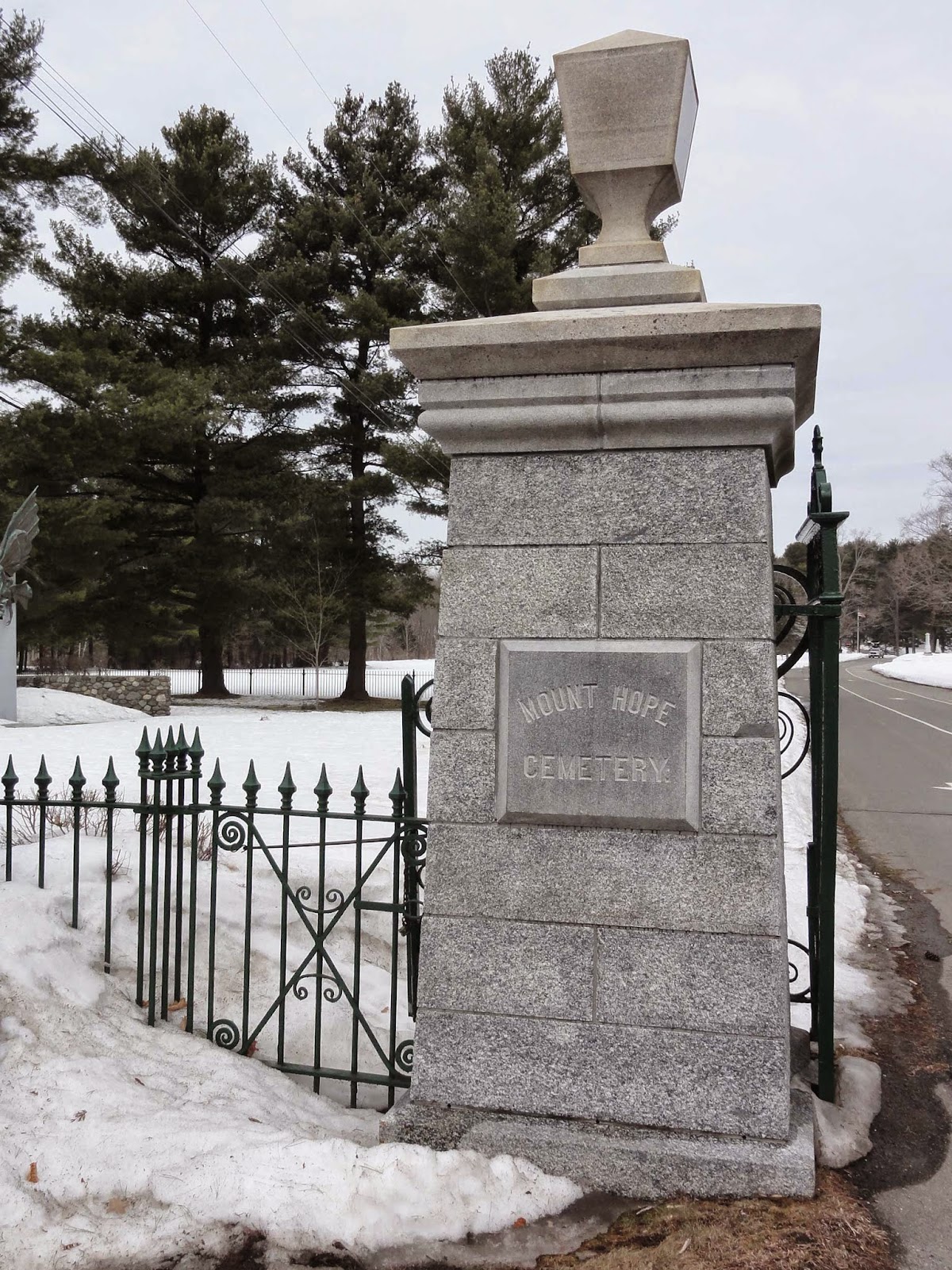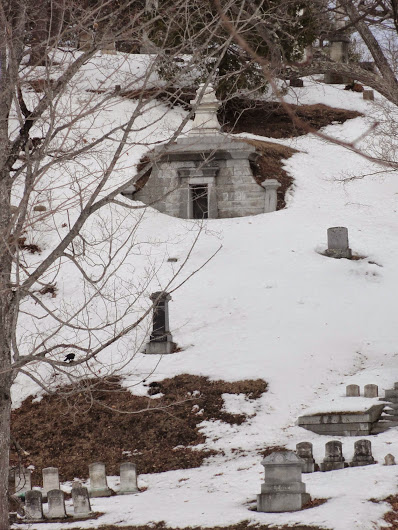 |
| Mt. Hope Cemetery, Bangor, ME |
The calendar read "spring", but the weather felt like winter when I returned to Mt. Hope Cemetery, Bangor, Maine in late March. The low was 9 degrees Fahrenheit the day before. Some locals thought the weather was warming; others disagreed. If it was mud-season, it was only around the edges. The Penobscot River looked pretty solid to me.
 |
| Penobscot River near Mt. Hope Cemetery, Bangor, ME |
Having visited Mt. Hope Cemetery when the
lilacs were blooming, it seemed bidding in a strange way to visit when the weather is harsh and the landscape bleak. Except for the fact that Mainers know how to keep the roads cleared, it was bleak, indeed.
 |
| Gate post. Mt. Hope Cemetery, Bangor, ME |
The gateposts looked grayer.
 |
| 2nd Maine Memorial |
The 2nd Maine Memorial death angel seemed more ominous.
 |
| Superintendent's Lodge. Mt. Hope Cemetery, Bangor, ME |
I imagined the occupant(s) in the Superintendent's Lodge preferred to be left alone.
 |
| Receiving House. Mt. Hope Cemetery. Bangor, ME |
The Receiving House (aka "Death House") suddenly made sense to me, for it is the repository for those who die in winter to be kept chilled until the frozen soil is soft enough for grave-diggers to plunge their shovels into the cold, cold ground.
Actually, I don't know if the Death House is still used.
Modern machines have been invented that can bust through concrete, and powerful pumps can keep water out even during mud season.
The
grove formerly covered with bluets was nearly inaccessible.
 |
| Memorial Fort. Grand Army of the Republic. Mt. Hope Cemetery, Bangor, ME |
I drove to
the Grand Army of the Republic Memorial Fort to take a closeup picture of it in
the snow. I hadn't stepped more than a yard before I sunk to my knees in
snow. I wished I'd thought to bring the
snowshoes I'd learned to use
two days before.
 |
| Stone bridge. Mt. Hope Cemetery, Bangor, ME |
I took pictures of the "fort" from afar, and
also
images of ducks, the stone bridge, and the omnipresent crow.
After filling my shoes with snow, I didn't range far. I photographed several views of the Mount.
 |
| Station House. Mt. Hope Cemetery, Bangor, ME |
I
captured a couple of images of the Station with its intricate ironwork
where mourners - mostly women - stepped off trains to grieve or
celebrate before ceremonies commenced.
After leaving the
cemetery, I parked beside the road for pictures. Frankly, it's difficult
to enjoy a great view of the Penobscot River from the road. There are
guard rails, passing vehicles and denuded trees.
Upon returning
to my car, I gazed again at the
Mount Hope Cemetery Station and
remembered that death is an occasion for grief and/or celebration. It
depends, I suppose, on the perspective and hope within.
 |
| Mt. Hope Cemetery, Bangor, ME |
 |
| Mt. Hope Cemetery, Bangor, ME |
If you, gentle reader, have visited Mt. Hope Cemetery in Bangor, ME, please let us know your experience in the comment section.
Return to
GoGardenNow.com.
















